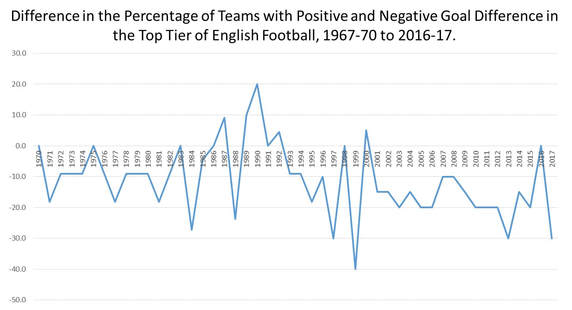I started by comparing the distribution of goal differences in other top European leagues. On the morning of March 17th, the Spanish, French, German and Dutch leagues all had more teams with negative goal difference than positive goal difference. The Italian league had an equal number of teams with a positive and negative goal difference. (I treated zero as neither positive nor negative.)
Next I looked at the lower tiers of English football. The second, third, and fourth tiers of English football all had more teams with negative goal difference than positive goal difference (as of the morning of March 17th).
Both of these comparisons were at a point in time. The next comparison involved looking at the distribution of teams (by goal difference) over time. The picture below shows the difference in the percentage of teams with positive and negative goal difference in the top tier of English football since the 1969-70 season. I used the percentage because the number of teams in the top tier has varied from 20 to 22.
Regardless of whether we look across (i) top flight of European football in 2018, (ii) the top four tiers of English football in 2018, or (iii) the top tier of English football since 1969-70, there are more teams with a negative goal difference than a positive goal difference. This leaves me with the question: Why?

 RSS Feed
RSS Feed